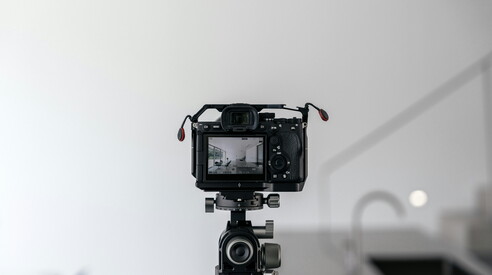No, AI won't destroy photography. Ritchin's optimistic manifesto


Photo by rawkkim on Unsplash
fears and hopes
Even more technology, but without fear. A book that explores how we can use machine learning and the tools developed in Silicon Valley to better understand the eighth art and its potential.
On the same topic:
The United States has seen an explosion of AI-generated child pornography. There are so many that authorities are at a loss as to how to handle them. The nonprofit Internet Watch Foundation found nearly 1,300 AI-generated child sexual abuse videos in the first few months of 2025 alone. In 2024, it had found a total of two. The technology is improving, and the videos are increasingly indistinguishable from real footage . Spokespeople for the Internet Watch Foundation said they were facing “a tsunami,” also because the machine-generated material also included real images of real children.
The arrival of DIY AI tools and the widespread accessibility of software like DALL-E, Canva, and Midjourney is creating monsters. Child pornography is just one of the many uses—certainly the most horrific—of AI image-generating tools, which now touch every field, from political propaganda to advertising, from deepfake porn of Hollywood stars to book covers. And then, as if the practical effects weren't enough, they cast doubt on the very aura of photography, a practice transformed into an art form over the last century, a practice that has gone from being a skill for the few to a habit for anyone with a smartphone. Just as in the mid-19th century there was a fear that lenses would destroy painting, today there are those who worry that AI could ruin the media reputation that photography has built over the last century and a half . Umberto Eco said: “Once upon a time there were mass media, they were bad, and you know there was a culprit. Then there were the virtuous voices that accused them of their crimes. And Art (ah, thank goodness) that offered alternatives, for those who weren't prisoners of the mass media. Well, it's all over. We have to start all over again to question what's happening.” It's a phrase that photography expert Fred Ritchin recounts in his new book The Synthetic Eye (Einaudi, translated by C. Veltri). The cover features a photo created by artificial intelligence of two romantic aliens “in the style of H.G. Wells,” one of the many exercises—or games—conceived by Ritchin to study how the image-generating machine works. The book is full of them: Abe Lincoln taking a selfie, the perfect family, romantic Martians in love, a photograph of an unhappy bot.
Ritchin's work isn't a theoretical text (as one might expect from PBE), but a somewhat Boomer-esque compilation of the greatness of 20th-century photojournalism (the author worked as a picture editor at the New York Times Magazine), from Robert Capa, killed by a landmine, to the images of Alan Kurdi, the Syrian boy found on a beach. But The Synthetic Eye is also, above all, an optimistic manifesto on how we can use machine learning and the tools developed in Silicon Valley to better understand the eighth art and its potential . "In visual media," says Ritchin, "there will continue to emerge ways in which artificial intelligence can help broaden our vision rather than weaken it." New technologies can, according to the author, help combat the destabilization created by the gigantic mass of photos we have in our hands, as well as restore strength to a medium that needs to rediscover its function, and whose power is currently diminished. Also because AI, “can explore not only what is, but also what could be” .
More on these topics:
ilmanifesto





